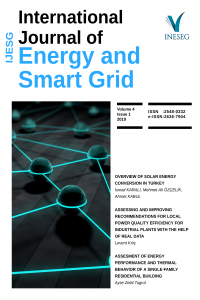RENEWABLE ENERGIES IN THE SETTLEMENTS (A STEP TOWARD A CLEAN CITY)
RENEWABLE ENERGIES IN THE SETTLEMENTS (A STEP TOWARD A CLEAN CITY)
As a result of the energy crisis of fossil fuel in the world, and pollution that comes from using these types of fuels, humans need to find clean and affordable energy to survive, impelling communities which produce their energy to carry out new initiatives. The use of wind, water, earth, solar and other clean energy has become possible, and finally, the world is on a path that requires new research in this field. Between the urban and social elements, per capita energy in the housing sector is allocated the highest consumption in the world, and this sector has the greatest amount of energy consumption in Iran as well. Researchers are presenting new solutions in addition to the usage of technology in the production of renewable energies, making closer to reality the reproducible ideas about using parts of buildings and natural forces around the buildings. This study is an attempt to explore the surrounding natural forces and materials that are used in construction, alongside the study of books and valid and scientific global websites that discussing the idea of using new technologies along with the existing energy production. Using renewable energy, homes have been made from special materials, where the manner of design adjusts to the environment (like solar energy), but can still function in any condition. We have seen that by studying the available information, biogas and photovoltaic systems are also intended to (in addition to their own sufficiency) and lead to saving energy. The day is coming that single municipal buildings will manage to make their fossil energy usage reach zero.
Keywords:
fossil energy photovoltaic, biogas systems,
___
- Referans1: Atlas of Enerji, cilt 02, Tehran: Planning Department, Ministry of Housing and Urban Development, 1994. Referans2: H. Ghanavati ve M. Tabatabaei, Biogas, Fundamentals Process and Operation, Berlin: Springer-Nature, 2019, pp. 25-30.
- Referans3: «www.planet-biogas.ca,» 01 January 2016. [Çevrimiçi]. Available: http://www.planet-biogas.ca/biogas/info. [Erişildi: 28 October 2019].
- Referans4: «https://docplayer.biz.tr,» 05 November 2017. [Çevrimiçi]. Available: https://docplayer.biz.tr/63615757-Hayvan-gubresinden-biogaz-uretimi.html. [Erişildi: 26 August 2019].
- Referans5: A. Saleh, «Biogas potential in Pakistan,» Renewable Energy Technologies, cilt 05, no. 10, p. 5, 2012.
- Referans6: Z. Hejri ve N. Saheb Jami, «Investigation of biogas production from wastwater and waste,» %1 içinde National Conference on Bioenergy, Tehran, 2010.
- Referans7: «http://www.knowclub.com,» 30 March 2007. [Çevrimiçi]. Available: http://www.knowclub.com/paper/?p=353. [Erişildi: 22 April 2019].
- Referans8: «https://i2.wp.com/,» 23 April 2018. [Çevrimiçi]. Available: https://i2.wp.com/thecityatlas.org/newyork/wp-content/uploads/Biogas_plant_sketch_ENG.jpg. [Erişildi: 15 May 2019].
- Referans9: P. Tabb, Solar Energy Planning, cilt 01, Berlin: Print and bound by Halliday lithograph, 1980, pp. 53-70.
- Referans10: «https://sites.google.com/,» 01 June 2016. [Çevrimiçi]. Available: https://sites.google.com/site/obnovljivaenergijazauvijek/solarna-fotonaponska-energija. [Erişildi: 13 May 2019].
- Referans11: «http://www.europe-solarproduction.com/,» 25 February 2018. [Çevrimiçi]. Available: http://www.europe-solarproduction.com/media/3051/poly-both_en.pdf. [Erişildi: 25 June 2019].
- Referans12: L. A. Dobrzanski, M. Macek ve A. Drygała, «Monocrystalline silicon solar cells,» The Journal of Achievements in Materials and Manufacturing Engineering, cilt 01, no. 23, p. 12, 2012.
- Referans13: «https://www.enis-pv.com/,» 25 May 2015. [Çevrimiçi]. Available: https://www.enis-pv.com/en/principle-of-operation-photovoltaic-cell.html. [Erişildi: 14 June 2019].
- Referans14: Handbook for Solar Photovoltaic (PV) Systems, Singapore: Energy Market Authority, 2012, p. 12.
- ISSN: 2548-0332
- Başlangıç: 2016
- Yayıncı: Zülküf GÜLSÜN
Sayıdaki Diğer Makaleler
Ayşe KOCALMIŞ BİLHAN, Serenay EMİKÖNEL
RENEWABLE ENERGIES IN THE SETTLEMENTS (A STEP TOWARD A CLEAN CITY)
Aıdın ARMANFAR, Mahsa KHANMOHAMMADI
DESIGN IMPROVEMENT OF A 2 MVA SYNCHRONOUS MACHINE BY USING PARTICLE SWARM OPTIMIZATION
